Abstract
Growth of Anabaena sp. strain 7120 (in the absence of chelators or added iron) was inhibited by the addition of 2.1 to 6.5 microM copper and was abolished by copper concentration of 10 microM or higher. When the copper was chelated to schizokinen (the siderophore produced by this organism in response to iron starvation), the toxic effects were eliminated. Analysis of culture filtrates showed that the cupric schizokinen remains in the medium, thereby lowering the amount of copper taken up by the cells. Although this organism actively transports ferric schizokinen, it apparently does not recognize the cupric complex. Thus, Anabaena sp. is protected from copper toxicity under conditions in which siderophore is being produced. For cells grown in low iron, the accumulation of extracellular schizokinen was observed to parallel cell growth and continue well into stationary phase. The actual iron status of the organism was monitored by using iron uptake velocity as an assay. Cultures grown on 0.1 microM added iron were found to be severely iron limited upon reaching stationary phase, thus explaining the continued production of schizokinen. These data show that the siderophore system in Anabaena spp. has developed primarily as a response to iron starvation and that additional functions such as alleviation of copper toxicity or allelopathic inhibition of other algal species are merely secondary benefits.
Full text
PDF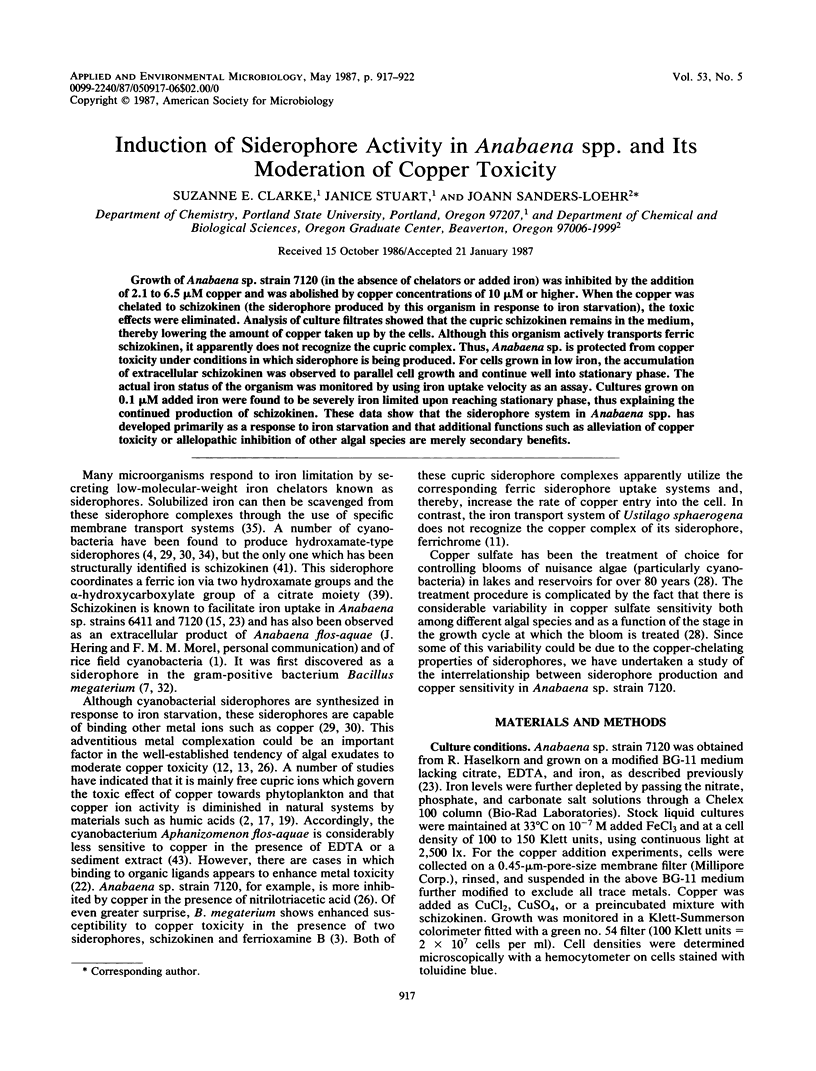

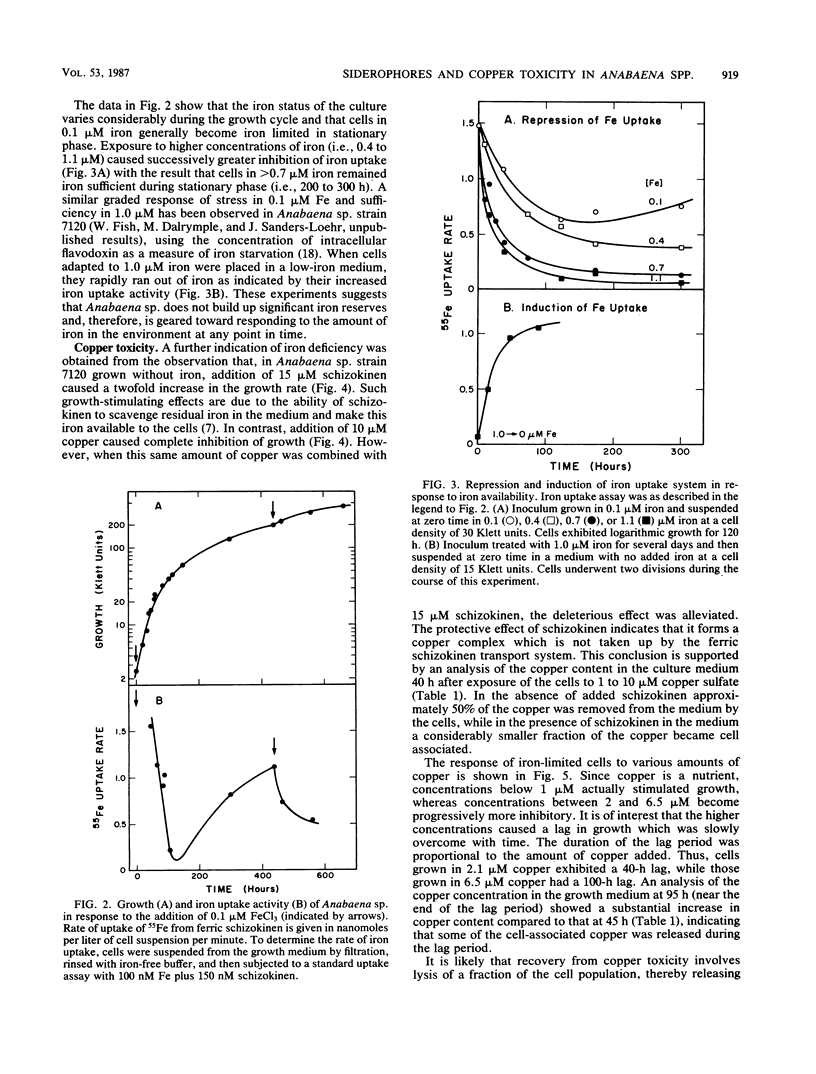
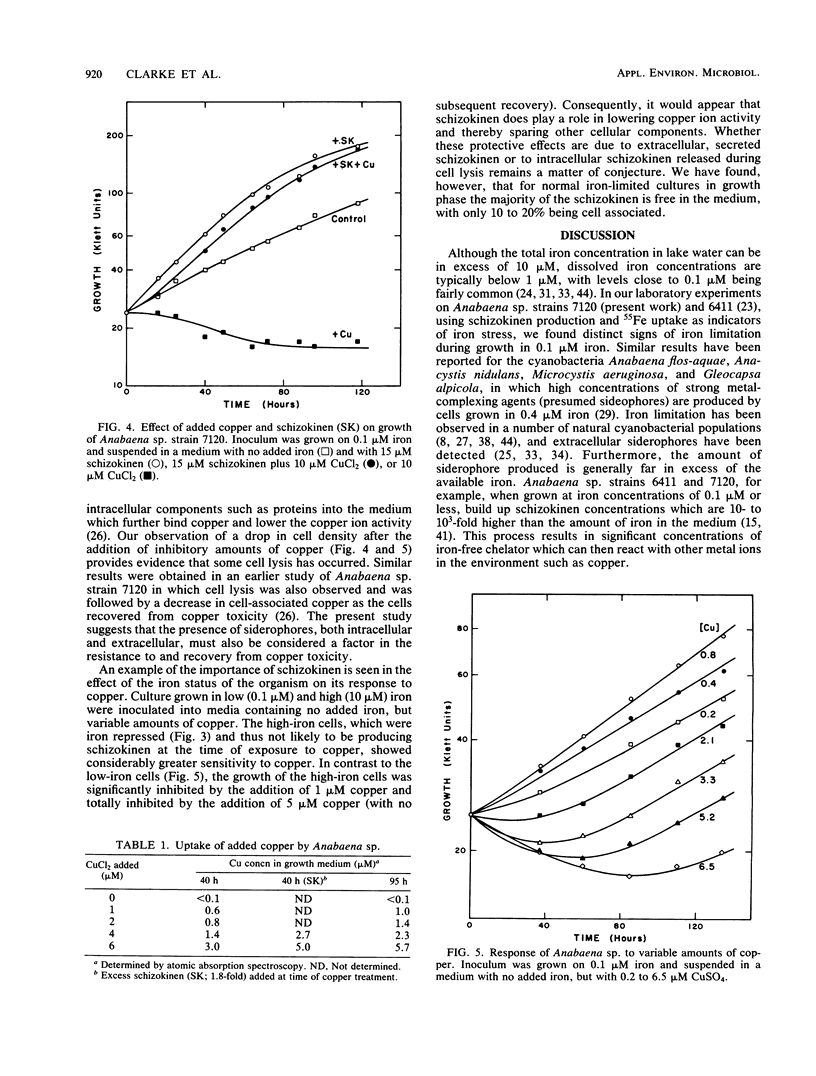
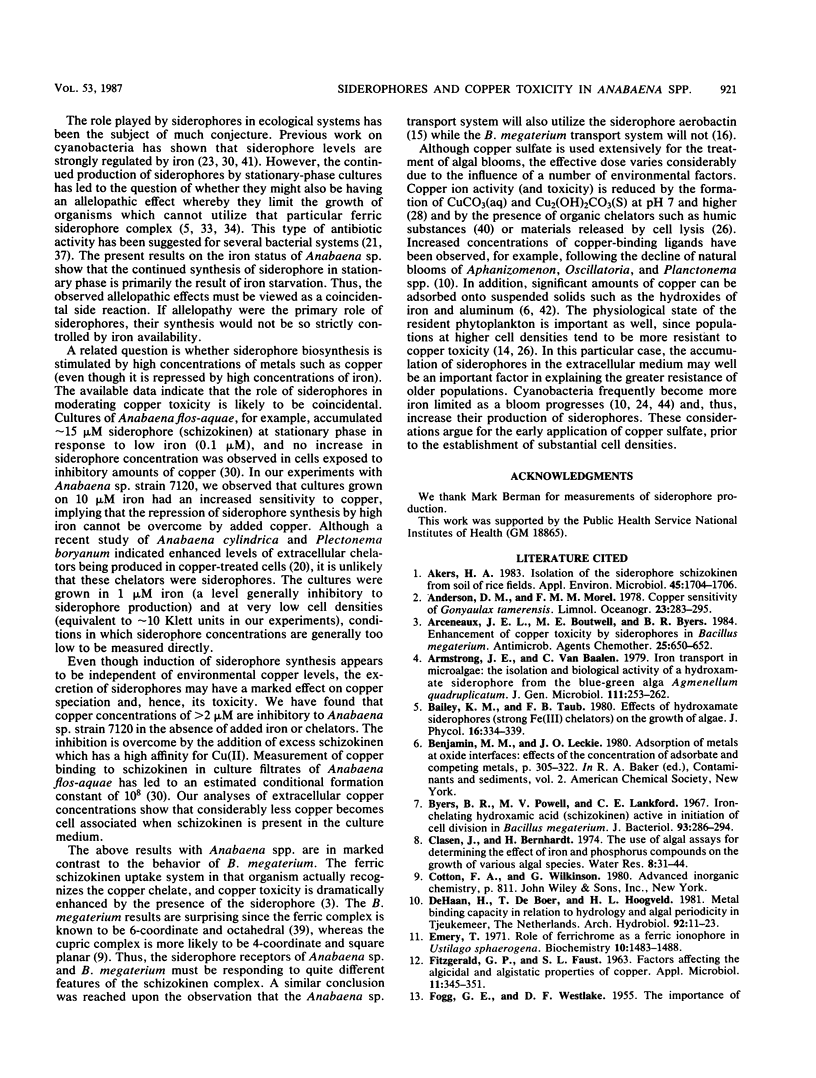
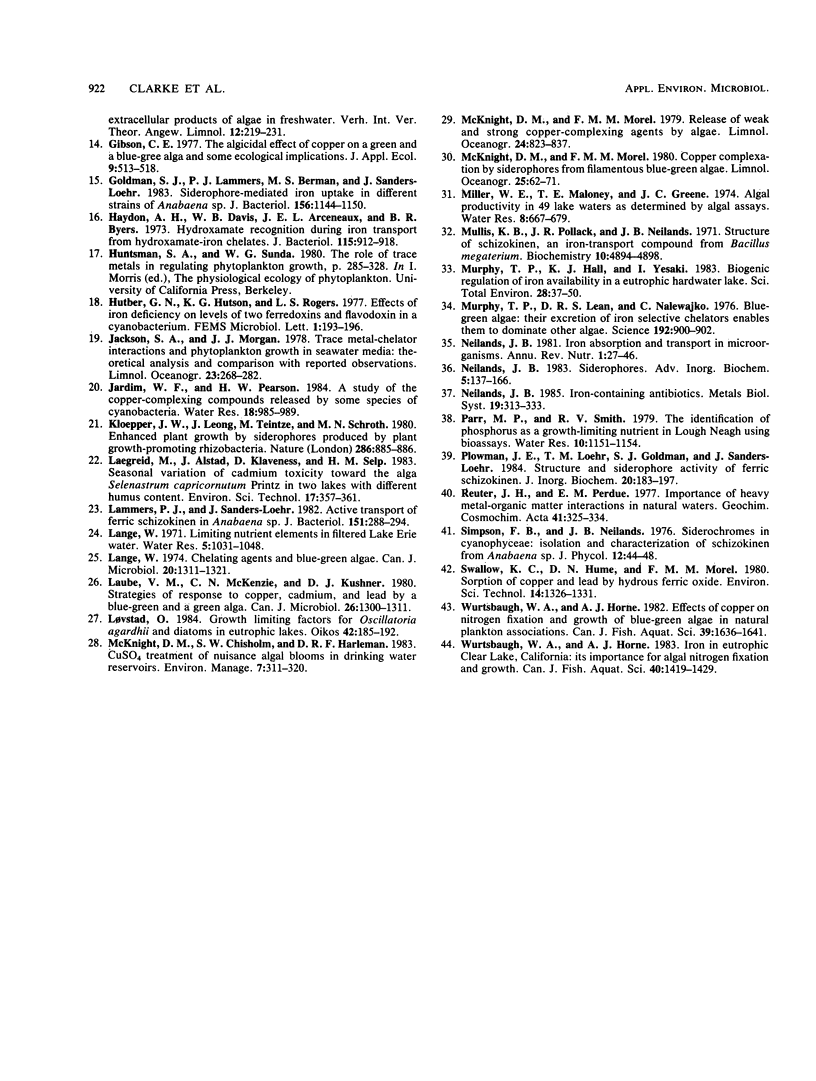
Selected References
These references are in PubMed. This may not be the complete list of references from this article.
- Akers H. A. Isolation of the siderophore schizokinen from soil of rice fields. Appl Environ Microbiol. 1983 May;45(5):1704–1706. doi: 10.1128/aem.45.5.1704-1706.1983. [DOI] [PMC free article] [PubMed] [Google Scholar]
- Arceneaux J. E., Boutwell M. E., Byers B. R. Enhancement of copper toxicity by siderophores in Bacillus megaterium. Antimicrob Agents Chemother. 1984 May;25(5):650–652. doi: 10.1128/aac.25.5.650. [DOI] [PMC free article] [PubMed] [Google Scholar]
- Byers B. R., Powell M. V., Lankford C. E. Iron-chelating hydroxamic acid (schizokinen) active in initiation of cell division in Bacillus megaterium. J Bacteriol. 1967 Jan;93(1):286–294. doi: 10.1128/jb.93.1.286-294.1967. [DOI] [PMC free article] [PubMed] [Google Scholar]
- Emery T. Role of ferrichrome as a ferric ionophore in Ustilago sphaerogena. Biochemistry. 1971 Apr 13;10(8):1483–1488. doi: 10.1021/bi00784a033. [DOI] [PubMed] [Google Scholar]
- FITZGERALD G. P., FAUST S. L. Factors affecting the algicidal and algistatic properties of copper. Appl Microbiol. 1963 Jul;11:345–351. doi: 10.1128/am.11.4.345-351.1963. [DOI] [PMC free article] [PubMed] [Google Scholar]
- Goldman S. J., Lammers P. J., Berman M. S., Sanders-Loehr J. Siderophore-mediated iron uptake in different strains of Anabaena sp. J Bacteriol. 1983 Dec;156(3):1144–1150. doi: 10.1128/jb.156.3.1144-1150.1983. [DOI] [PMC free article] [PubMed] [Google Scholar]
- Haydon A. H., Davis W. B., Arceneaux J. E., Byers B. R. Hydroxamate recognition during iron transport from hydroxamate-ion chelates. J Bacteriol. 1973 Sep;115(3):912–918. doi: 10.1128/jb.115.3.912-918.1973. [DOI] [PMC free article] [PubMed] [Google Scholar]
- Lammers P. J., Sanders-Loehr J. Active transport of ferric schizokinen in Anabaena sp. J Bacteriol. 1982 Jul;151(1):288–294. doi: 10.1128/jb.151.1.288-294.1982. [DOI] [PMC free article] [PubMed] [Google Scholar]
- Laube V. M., McKenzie C. N., Kushner D. J. Strategies of response to copper, cadmium, and lead by a blue-green and a green alga. Can J Microbiol. 1980 Nov;26(11):1300–1311. doi: 10.1139/m80-217. [DOI] [PubMed] [Google Scholar]
- Mullis K. B., Pollack J. R., Neilands J. B. Structure of schizokinen, an iron-transport compound from Bacillus megaterium. Biochemistry. 1971 Dec 21;10(26):4894–4898. doi: 10.1021/bi00802a010. [DOI] [PubMed] [Google Scholar]
- Murphy T. P., Lean D. R., Nalewajko C. Blue-green algae: their excretion of iron-selective chelators enables them to dominate other algae. Science. 1976 May 28;192(4242):900–902. doi: 10.1126/science.818707. [DOI] [PubMed] [Google Scholar]
- Neilands J. B. Iron absorption and transport in microorganisms. Annu Rev Nutr. 1981;1:27–46. doi: 10.1146/annurev.nu.01.070181.000331. [DOI] [PubMed] [Google Scholar]
- Neilands J. B. Siderophores. Adv Inorg Biochem. 1983;5:137–166. [PubMed] [Google Scholar]


